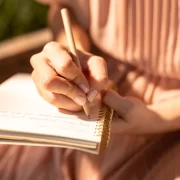
Tamanho desta previsualização: 800 × 533 pixels. Outras resoluções: 320 × 213 pixels | 640 × 427 pixels | 1 024 × 683 pixels | 1 280 × 853 pixels | 2 560 × 1 707 pixels | 6 000 × 4 000 pixels.
Imagem numa resolução maior (6 000 × 4 000 pixels, tamanho: 13,72 MB, tipo MIME: image/jpeg)
Este arquivo é do Wikimedia Commons e pode ser utilizado por outros projetos. Sua página de descrição de arquivo é reproduzida abaixo.
Descrição do arquivo
| DescriçãoGreat Cormorants are from PHALACROCORACIDAE Family 25.jpg |
English: The cormorant (Phalacrocorax carbo), a large water bird, has a long neck, giving it something of a primitive, reptilian appearance. Adults are black with a bluish or green sheen. At the base of the bill is an area of bare, yellow skin surrounded by white. During the breeding season there is a white patch on the thigh, and throughout the year a variable amount of white occurs on the crown and back of the neck. Juveniles are dark brown and have a white area on the underparts. A variety of deep vocalizations are produced in colonies. The name cormorant is derived from the Latin 'Corvus Marinus', which means 'sea crow' Ever seen a V-shaped flock of blackbirds flying purposefully in the sky near a water body? Or a blackbird sitting still with its wings spread out in a small village pond? Or a bird’s head sticking out of the water at a lake or pond? Did you notice any large colonies of blackbirds nesting on tall trees by a wetland? These were all probably cormorants! While Little Cormorants may usually be seen feeding singly or in small groups, larger congregations and loose flocks are also seen in bigger waterbodies. Breeds along rocky maritime coasts, nesting on cliff ledges or rocky islands free of predators and feeding in sheltered inshore waters. Cormorants and shags are very gregarious and form huge breeding colonies on coastal cliffs and islets. They roost in large flocks and perform sometimes collective fishing at abundant food sources. They can be seen on exposed perches with spread wings and tail, drying their plumage after some pursuit-diving. This is a cormorant’s typical posture, although the shags living in Antarctic and subantarctic regions do not perform “wing-spreading” probably as an adaptation to the very cold climate and to avoid the heat loss. Hatching occurs about 1 month after the eggs are laid. The chicks will then remain in the nest for a further 2 months. The chick is fed with regurgitated food that is pulled out of the adult’s throat. Some colonies of Cormorants have been observed herding fish for more efficient hunting. The nest is mostly made of finger-size sticks, with some seaweed and flotsam, and lined with grass. high; ground nests tend to be wider than tree nests, but tree nests have deeper interiors. Breeding cormorants readily steal nesting materials from a nearby nest that’s not guarded. |
| Data | |
| Fonte | Trabalho próprio pelo carregador |
| Autor | Shiv's fotografia |
Licenciamento
Eu, titular dos direitos autorais desta obra, publico-a nos termos da seguinte licença:
A utilização deste arquivo é regulada nos termos da licença Creative Commons Atribuição-CompartilhaIgual 4.0 Internacional.
- Você é livre:
- para compartilhar – copiar, distribuir e transmitir a obra
- para remixar – para adaptar o trabalho
- Sob as seguintes condições:
- atribuição – Você deve dar crédito apropriado, fornecer um link para a licença e indicar se as alterações foram feitas. Você pode fazê-lo de qualquer maneira razoável, mas não de maneira alguma que sugira que o licenciador endossa você ou seu uso.
- compartilhar igualmente – Se você remixar, transformar ou construir sobre o material, você deve distribuir suas contribuições sob a licença igual ou compatível como o original.
Legendas
Adicione uma explicação em uma linha sobre o que este arquivo representa
Itens retratados neste arquivo
retrata
Algum valor sem um item do Wikidata
18 novembro 2018
Histórico do arquivo
Clique em uma data/horário para ver como o arquivo estava em um dado momento.
| Data e horário | Miniatura | Dimensões | Usuário | Comentário | |
|---|---|---|---|---|---|
| atual | 05h56min de 19 de novembro de 2018 |  | 6 000 × 4 000 (13,72 MB) | wikimediacommons>Shiv's fotografia | User created page with UploadWizard |
Uso do arquivo
As seguinte página usa este arquivo:
Metadados
Este ficheiro contém informação adicional, provavelmente adicionada a partir da câmara digital ou scanner utilizada para criar ou digitalizar a imagem. Caso o ficheiro tenha sido modificado a partir do seu estado original, alguns detalhes poderão não refletir completamente as mudanças efetuadas.
| Fabricante da câmara | NIKON CORPORATION |
|---|---|
| Modelo da câmara | NIKON D5600 |
| Tempo de exposição | 1/1 000 seg (0,001) |
| Número F | f/6,3 |
| Taxa de velocidade ISO | 250 |
| Data e hora da geração dos dados | 02h38min de 18 de novembro de 2018 |
| Comprimento de foco da lente | 300 mm |
| Orientação | Normal |
| Resolução horizontal | 300 ppp |
| Resolução vertical | 300 ppp |
| Software utilizado | Ver.1.02 |
| Data e hora de modificação do arquivo | 02h38min de 18 de novembro de 2018 |
| Posicionamento Y e C | Co-localizada |
| Programa de exposição | Manual |
| Versão Exif | 2.3 |
| Data e hora de digitalização | 02h38min de 18 de novembro de 2018 |
| Significado de cada componente |
|
| Modo de compressão de imagem | 4 |
| Polarização de exposição | 0 |
| Abertura máxima | 5,3 APEX (f/6,28) |
| Modo de medição | Ponto |
| Fonte de luz | Desconhecida |
| Flash | Flash não disparou, disparo de flash suprimido |
| Subsegundos DataHora | 85 |
| Subsegundos DataHoraOriginal | 85 |
| Subsegundos DataHoraDigitalizado | 85 |
| Versão de Flashpix suportada | 1 |
| Espaço de cor | sRGB |
| Método de sensação | Sensor de áreas de cores de um chip |
| Fonte do arquivo | Câmara fotográfica digital |
| Tipo de cena | Imagem fotografada diretamente |
| Processamento de imagem personalizado | Processo normal |
| Modo de exposição | Exposição manual |
| Balanço do branco | Balanço de brancos automático |
| Proporção de zoom digital | 1 |
| Distância focal em filme de 35 mm | 450 mm |
| Tipo de captura de cena | Padrão |
| Controlo de cena | Nenhum |
| Contraste | Normal |
| Saturação | Normal |
| Nitidez | Normal |
| Distância de alcance do sujeito | Desconhecida |
| Versão de GPS | 0.0.3.2 |
| Classificação (max. 5) | 0 |




 " class="attachment-atbs-s-4_3 size-atbs-s-4_3 wp-post-image" alt="O que estudar para o enem 2023">
" class="attachment-atbs-s-4_3 size-atbs-s-4_3 wp-post-image" alt="O que estudar para o enem 2023"> " class="attachment-atbs-s-4_3 size-atbs-s-4_3 wp-post-image" alt="Qual melhor curso para fazer em 2023">
" class="attachment-atbs-s-4_3 size-atbs-s-4_3 wp-post-image" alt="Qual melhor curso para fazer em 2023"> " class="attachment-atbs-s-4_3 size-atbs-s-4_3 wp-post-image" alt="Enem: Conteúdos E Aulas On-Line São Opção Para Os Estudantes">
" class="attachment-atbs-s-4_3 size-atbs-s-4_3 wp-post-image" alt="Enem: Conteúdos E Aulas On-Line São Opção Para Os Estudantes"> " class="attachment-atbs-s-4_3 size-atbs-s-4_3 wp-post-image" alt="Como Fazer Uma Carta De Apresentação">
" class="attachment-atbs-s-4_3 size-atbs-s-4_3 wp-post-image" alt="Como Fazer Uma Carta De Apresentação"> " class="attachment-atbs-s-4_3 size-atbs-s-4_3 wp-post-image" alt="Como Escrever Uma Boa Redação">
" class="attachment-atbs-s-4_3 size-atbs-s-4_3 wp-post-image" alt="Como Escrever Uma Boa Redação"> " class="attachment-atbs-s-4_3 size-atbs-s-4_3 wp-post-image" alt="Concurso INSS edital 2022 publicado">
" class="attachment-atbs-s-4_3 size-atbs-s-4_3 wp-post-image" alt="Concurso INSS edital 2022 publicado">


